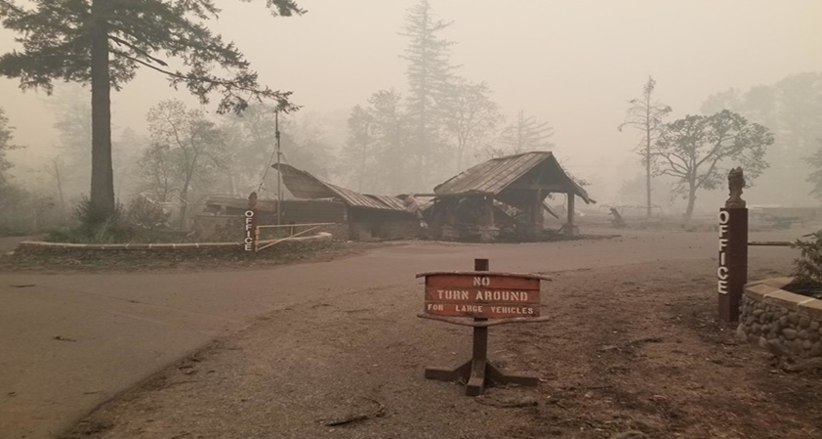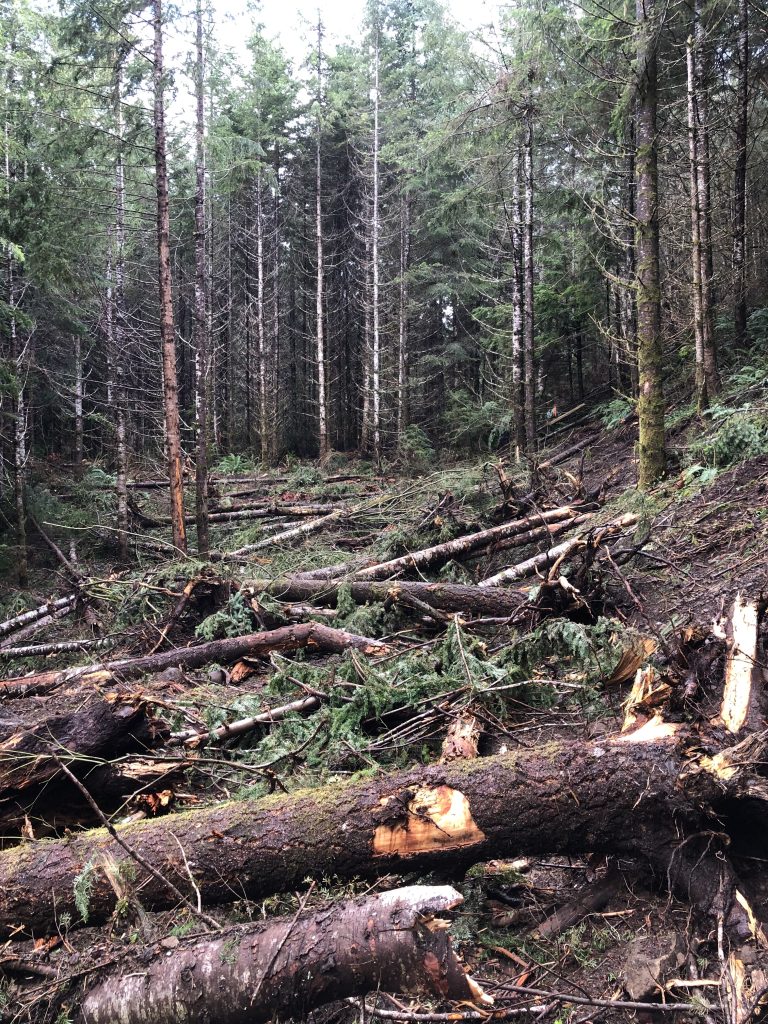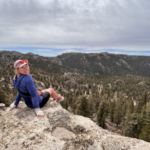Although wildfire is a natural occurrence in ecosystems, it can be dangerous and destructive when it spreads into residential areas. This page will help you find the resources you need to better prepare your home from wildfire damage. Our staff are ready and available to assist with any further questions.
Research has shown that reducing fuel sources around a structure can greatly increase the chance of it surviving a wildfire. Fire needs three elements to occur; fuel, oxygen and heat. Remove anyone of them and the fire will die out. Fuel is defined as anything that can burn. Land owners should systematically arrange trees and shrubs in a way that makes it difficult for fire to spread on your property. Many fires start from a single ember that lands on a fire fuel source. Fires should never be left unattended. Consider creating a defensible space around your structures, and hardening your home and landscapes to be better protected against wildfires.
Read our blog post about the Wildfire Preparedness and Resiliency Conservation Club event for more resources, contacts, and information about how to protect your property.

Importance of Fire
Fire is mostly seen as destructive in our current society, but it’s actually the lack of fire over the last 175 years that cause wildfires to spread out of control. For Millenia before European settlement in Oregon, wildfires and even regular cultural burns conducted by humans had kept forests healthy. The Native Americans that have been and continue to manage this land since time and memorial understood that frequent low severity understory fires actually prevent damage to forest ecosystems and have endless benefits to wildlife and human habitats. Fire helps remove unwanted invasive species, slash build up, parasites, diseases and insects, while the remaining ash provides needed nutrients to the soil. Fire also helps reduce the amount of fuel in the forest resulting in smaller, less severe wildfires. Some trees require the high temperature of fire to open their cones for seed dispersal and reproduction.
Low intensity frequent fires have been used by humans long before European settlement in the Willamette Valley. Many of our native plant and animal species have evolved with this disturbance regime and depend on it for food and shelter. Although fire suppression has largely dominated the narrative of fire on the landscape since colonial settlement, the Kalapuya Tribes that have and continue to live in the Willamette Valley use cultural burning as a way to manage the landscape. Listen to this episode of the Conservation Spotlight: Benefits of Fire Management, Joe Scott.
Home Fire Prevention
The best way to protect your property from wildfire destruction is to create a defensible space, harden your home and landscape, manage your woodland and fuels load, and create an access route for fire fighters.
Home hardening is crucial in protecting your valuables from being lost if a fire happens to reach your house. It is most helpful to build or retrofit your home with noncombustible materials, class A or B roofing, flame resistant vent or no vent for attics, and tempered glass windows. However, this can be an expensive process that’s not available to everyone. Creating a defensible space around the home is one of the most important methods of preventing fire damage to the home. Visit Oregon Defensible Space to learn how to assess your property and reduce your wildfire risk.
A fire break is a gap in vegetation or other combustible material that works to stop or slow the progress of a brush or wildfire. Rivers, lakes, canyons, roads or gravel trails are examples of both natural and man-made fire breaks. Developing a yearly schedule can help speed up implementing and maintaining fire prevention measures on your property. To create a firebreak:
- Remove combustible vegetation from 30 feet around the house, a 100-foot buffer is ideal.
- Short green lawn is OK.
- Prune tree branches to at least 10 feet above the ground.
- Keep limbs at least 15 feet away from the roof and chimney.
- Clear roofs and gutters of debris.
- Have a shovel, rake, axe, saw, bucket, roof ladder and hose ready for use during the fire season.
- Replace flammable building materials and vegetation with more fire-resistant ones
- When burning, have a good water source near by.

Evacuation
Prepare an evacuation strategy with two different paths from your property and keep laminated maps of these routes in your preparedness kit. Create a portable supply kit filled with the essentials: food, water, medications, important paperwork, tools, and appropriate clothing. If you have a gas or propane tank on site, shut them off prior to evacuation. It is also a good idea to shut off the electricity at the circuit breaker box starting with individual breakers before pulling the main breaker. Gas lines should also be shut off at the meter as well as tanks. Most importantly, follow the instructions of your local fire or police officials during a fire event.
Backyard Burning
Backyard burning is allowed in rural Marion County, with certain limitations. Garbage burning is prohibited. Garbage must be properly disposed of curbside or at a local transfer station. If not done properly, backyard burning can cause public and environmental harm could result in a fine.
Marion County has designated areas directly outside of urban areas as special control areas for burning. Within these areas residents are only allowed to burn YARD DEBRIS on designated “Burn Days”. Burn Days historically occur in the Spring (March-June) and during the Fall (October-December). Burning on days not classified as a Burn Day, is subject to a fine. Contact your local fire district to find out when these days occur. and to check if a permit is needed.
Restricted Areas:
- Within 3 miles of the city limits of an urban area with a population between 1,000 – 45,000.
- Within 6 miles of the city limits of an urban area with a population of 45,000 +.
Rural Marion County residents outside of the restricted burn area are allowed to burn with permission from the local fire district:
- Yard Debris
- Clean and Untreated Wood
- Paper and Cardboard
- Woody Debris
Wildfire Preparedness Resources
Wildfire Response and Recovery Resources
- Oregon Wildfire Resources
- OSU Extension Fire Program
- Conservation Spotlight: Livestock Smoke Exposure, Dr. Jenifer Cruickshank (Listen)
- Conservation Spotlight: Labor Day 2020 Fire & Forest Regeneration, Shawn Rivera (Listen)
Contact Us
Contact us for more information on Wildfire Prevention.

